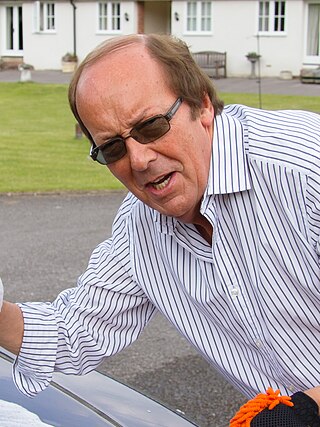
Southern Television was the ITV broadcasting licence holder for the South and South-East of England from 30 August 1958 to 31 December 1981. The company was launched as 'Southern Television Limited' and the title 'Southern Television' was consistently used on-air throughout its life. However, in 1966, during the application process for contracts running from 1968, the company renamed itself 'Southern Independent Television Limited', a title which was used until 1980 when the company reverted to its original corporate name. Southern Television ceased broadcasting on the morning of 1 January 1982 at 12:43am, after a review during the 1980 franchise round gave the contract to Television South.

Television South (TVS) was the ITV franchise holder in the South and South East of England between 1 January 1982 at 9.25 am and 31 December 1992 at 11.59 pm. The company operated under various names, initially as 'Television South plc' and then following reorganisation in 1989 as 'TVS Entertainment plc', with UK broadcasting activities undertaken by subsidiary 'TVS Television Ltd'.

BBC South East Today is the BBC South East regional television news programme, serving Kent, East Sussex, part of West Sussex and a small part of Surrey. Prior to its launch on 3 September 2001, most of the viewers in the region received Newsroom South East, though some had been receiving South Today.

ITV Meridian is the holder of the ITV franchise for the South and South East of England. The station was launched at 12:00 am on 1 January 1993, replacing previous broadcaster Television South, and is owned and operated by ITV plc, under the licensee of ITV Broadcasting Limited. Meridian Broadcasting Ltd was one of several ITV plc-owned regional companies to have its legal name changed on 29 December 2006, when it became ITV Meridian Ltd. This company is, along with most other regional companies owned by ITV plc, listed with Companies House as a "Dormant company".

Frederick Edgar Dinenage is a British author, broadcaster and television presenter. His television career has spanned nearly 60 years, including the long-running children's programme How and ITV's regional programming in the south of England. Dinenage retired from presenting regional news on ITV Meridian on 16 December 2021, after 38 years as a news anchor.
Seven News is the television news service of the Seven Network and, as of 2021, the highest-rating in Australia.

BBC South Today is the BBC's regional television news service for the south of England, covering Hampshire, Isle of Wight, Berkshire, Oxfordshire, West Sussex, much of Dorset and parts of Surrey and Wiltshire. The service is produced and broadcast from the BBC South's Broadcasting House on Havelock Road in Southampton with district newsrooms based in Brighton, Dorchester, Guildford, Oxford, Reading, and Swindon.

Westcountry Live was the flagship regional news programme of ITV Westcountry, serving South West England.

ITV News Meridian is a British television news service broadcast and produced by ITV Meridian. The news service is produced and broadcast from ITV Meridian's studios in Whiteley, near Fareham with reporters also based at bureaux in Didcot, Brighton and Maidstone.

BBC South is the BBC English Region serving Hampshire, Isle of Wight, Dorset, West Sussex, Oxfordshire, Berkshire and parts of Gloucestershire, Buckinghamshire, Northamptonshire, Surrey, and Wiltshire, with geographic coverage varying between digital, television and radio services.

BBC South East is the BBC English region serving Kent, East Sussex, parts of West Sussex and Surrey.
WIN News is a local television news service in parts of regional Australia, produced by WIN Television. 14 regional bulletins and news update services are presented from WIN's headquarters in Wollongong, and until 2021 included production of a national compilation programme shared between the city and Maroochydore.
Anna Maria Ashe is a British television presenter, best known as a newsreader for the local news programme, London Tonight.
Anne Dawson is an English academic, formerly a broadcast journalist and television presenter.
Mai Davies is a Welsh journalist and television presenter.
Scene South East is a regional television news magazine programme produced by Southern Television, that covered the south east of England. The weekly sub-regional programme was broadcast from October 1964 to December 1981.

ITV News Calendar is a British television news service broadcast and produced by ITV Yorkshire.
This is a timeline of the history of the former British broadcaster Southern Television. It provided the ITV service for the South and South East of England from 1958 to 1981.
This is a timeline of the history of the former British broadcaster TVS. It provided the ITV service for the South and South East of England from 1982 to 1992.












